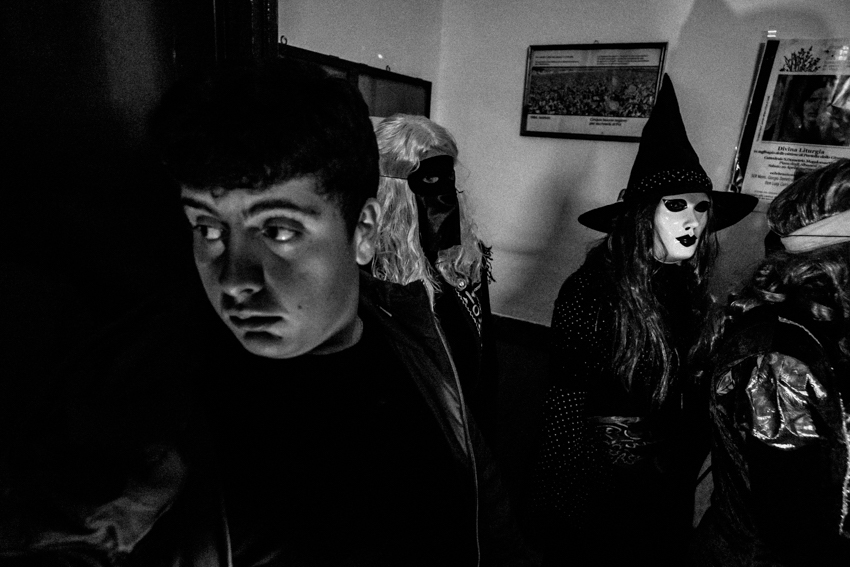The photographer, Angelo Cirrincione, speaks about a Sicilian masked ball, where women dressed in grotesque costumes are the ones to choose their dance partners.
LFI: How did you become aware of this event?
Angelo Cirrincione: I was talking about Carnival with a street seller originally from that town, and he told me with a smile that an old tradition was coming back to life: masquerade balls in which only the women disguise themselves, and they choose their partners – who are not masked – for each dance.
LFI: Can you tell us something about the origins of this tradition?
The history of the Carnival is very well documented from the 16th century onwards. It’s about 500 years of history of festivals. Originally, only nobles were allowed to disguise themselves. They took advantage of this, roaming the streets amongst the crowd to make fun of the people, often even using whips to hit them without being recognized.
In 1770, Cesare Gaetani, Prince of Lanza, gave everyone access to the masked balls at the S. Caterina Theatre during the opening of the Carnival. From there on, it is assumed that, in addition to being fun, the disguises helped noble women hide their love intrigues during Carnival.
LFI: How would you describe the atmosphere in the ballrooms?
I found a grotesque atmosphere that was noir at times – just the way I like it. The embellishment of the ballrooms was one of the most beautiful things to see. Festoons of coloured paper and paper mache attached to the walls without following any aesthetic rule, just to give colour and warmth. The walls of the ballroom covered with stereo wires attached with scotch tape; but the aspect I love most, is that men and women of all ages love dancing.
LFI: It looks like a very intimate event – can you describe how you proceeded photographically?
Let’s say that in this case, in those rooms, in those strange spaces, the only alien seemed to be me, because everything flowed incredibly naturally.
Only masked women enter, while the men lean against the walls waiting for an invitation; and after a few hours the spaces are completely filled but used to full advantage, with the incredible synchronism of everyone’s dancing.
I often ended up squeezed against the wall, as part of the scenography, along with the men who weren’t dancing. Sometimes I found myself pleasantly dragged along by the flow of dance that filled the room. They only looked at me with curiosity at the beginning, because no one had ever photographed them this way, without interaction, telling the story of the passion and fun they look forward to punctually once a year. They never showed any inhibition in front of the lens, because dancing frees the soul; and on those very anticipated evenings, the important thing is just to have fun.
https://lfi-online.de/ceemes/en/blog/the-masked-ball-2094.html





































